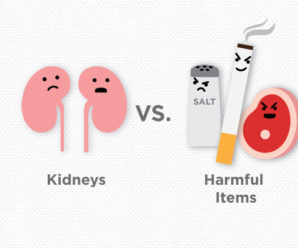
Most of us have experienced a rush in heartbeat in our lifetimes when scared or anxious. But when does an elevated heart rate become a concern?
A normal heart rate is between 60 and 100 beats per minute (BPM). A heart rate above 100 beats per minute at rest is abnormal and called tachycardia, according to Dr. Mohammad Diaa Alaoua, Marshfield Clinic Health System cardiologist.
Two types of tachycardia
Tachycardia is not always related to an underlying condition. It may be caused by a myriad of things from exercise to anxiety to stress.
There are two types of tachycardia – when the heart is in normal rhythm or when the heart is out of normal rhythm.
Sinus tachycardia is when the heart is in normal rhythm but going faster than normal. Common causes of this condition are physiologic when the heart is responding to another triggering factor in the body such as stress, anxiety, dehydration, fever, increased thyroid function, hypoxic lung disease and acute lung clot. “Rarely, the cause of this type is secondary to an abnormality in the heart itself, such as inappropriate sinus tachycardia syndrome or postural orthostatic tachycardia syndrome (POTS),” said Dr. Alaoua.
Tachycardia that occurs when the heart is out of normal rhythm can be broken into two sub-types.
“The first subtype is when the upper chambers of the heart (the atria) are beating (?) out of rhythm, usually because of a congenital short circuit inside the heart that gets activated every now and then,” Dr. Alaoua said. “The most common examples of that are atrial flutter and supraventricular tachycardia – or there are multiple spots in the upper chambers that are firing together inappropriately. The most common example of that is atrial fibrillation.”
The second subtype involves the lower heart chambers going out of rhythm (the ventricles). “This subtype is much more serious because it is usually associated with serious heart muscle condition such as during a heart attack or secondary to a significant scar in the heart muscle. This type of tachycardia can lead to cardiac arrest.”
What does tachycardia feel like?
Tachycardia can feel different from one patient to another. Common symptoms include fainting, lightheadedness, rapid heartbeat, fluttering in the chest, bounding pulse, chest pressure, tightness or pain, shortness of breath and fatigue. Some patients may even pass out or go into cardiac arrest.
“The majority of patients will feel a racing sensation in the heart, which can be associated with dizziness and lightheadedness. This is due to the fact that when the heart is fast in rhythm, it does not have enough time to fill up with blood adequately, and as a result it will not deliver adequate blood to the brain each cycle,” Dr. Alaoua said.
However, some patients will not feel the actual tachycardia at all. “Some patients will feel only the effects of it on the body such as dizziness, lightheadedness or weakness,” he said. “Some patients may feel the tachycardia occasionally, although it is happening all the time. Other patients may present to the emergency room with a passing out spell as a first symptom of an acute onset of tachycardia. In addition, some patients may present with congestive heart failure, with swelling up all over the body because of tachycardia.”
Treatment
Tachycardia treatments vary depending on type.
For sinus tachycardia, the underlying cause such as anxiety and stress, thyroid disorder, low blood oxygen or dehydration is treated, which should improve the associated fast heart rate.
Tachycardia when the heart is out of normal rhythm can be treated with medications to slow down the heart rate or to work directly on the electrical circuit of the heart. Additional treatments include cardioversion and catheter-based ablation therapy.
Cardioversion means shocking the heart electrically under general anesthesia back into normal rhythm. Catheter-based ablation therapy involves introducing multiple special catheters through the veins of the legs to inside the heart. “The catheters are used to map the normal and abnormal electrical activity of the heart utilizing a special computer, and then localizing the abnormal electrical activity that causes the tachycardia to freeze it or burn it out,” Dr. Alaoua said. “Some types of tachycardia that involve the lower chamber of the heart may also require implanting a special device called a defibrillator that can detect those tachycardia episodes and shock the heart internally back in normal rhythm.”
Early detection is key
If left untreated, the heart muscles could become weakened and lead to tachycardia-induced cardiomyopathy. If discovered at early stages and depending on type, it typically can be treated.
“There are other serious consequences that the patient needs to be aware of,” Dr. Alaoua said. “If the patient has atrial fibrillation or flutter, they are at risk of forming a clot inside the heart that can go to the brain causing stroke or to other organs in the body. If the tachycardia is in the lower chambers, it can cause passing out, cardiac arrest and death.”
If you have concerns about your heart health, talk with your primary care provider.
Related Shine365 posts
Palpitations: A change in your heartbeat







Leave a Reply